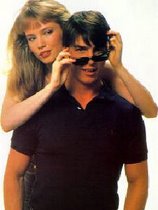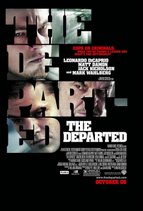
Toy Beads Convert Into Date Rape Drug
http://www.cfnews13.com/News/Local/2007/11/8/toy_beads_convert_into_ghb.html
Four million toy beads have been recalled after it was found they contain a powerful date rape drug.
The beads have been pulled from shelves in both North America and Australia, but over Wednesday night, they were still available at the Wal-Mart and K-Mart Web sites.
Scientists found the beads contain a chemical that converts into the dangerous drug, GHB when eaten.
The toys are labeled Aqua Dots in the United States and Bindeez Beads in Australia. It was named Australia's Toy of the Year and Wal-Mart put it on its Top 12 Toys Of Christmas.
In the United States, two children fell into comas after ingesting the beads. Both have since recovered.
The toy beads are imported from a manufacturer in China. They are distributed by Spin Master, of Toronto, Canada.
News 13 was able to purchase the recalled beads at a local Wal-Mart Thursday morning.
http://www.wisn.com/video/14537159/index.html

Toys linked to a date-rape drug recalled
China-made beads for kids metabolize into GHB when ingested
http://www.msnbc.msn.com/id/21678196/
Millions of Chinese-made toys have been pulled from shelves in North America and Australia after scientists found they contain a chemical that converts into a powerful “date rape” drug when ingested. Two children in the U.S. and three in Australia were hospitalized after swallowing the beads.
With only seven weeks until Christmas, the recall is yet another blow to the toy industry — already bruised by a slew of recalls last summer.
In the United States, the toy goes by the name Aqua Dots, a highly popular holiday toy distributed by Toronto-based Spin Master Toys. It is called Bindeez in Australia, where it was named toy of the year at an industry function earlier this year.
Moose Enterprises said Bindeez and Aqua Dots are made at the same factory, which is located in Shenzhen in China’s southern Guangdong province. Last week the Chinese government announced an export ban on more than 700 toy factories in the region because of shoddy products.
The company said that the product is distributed in 40 countries but that it was up to the individual countries and distributors to determine whether the product would be pulled.
The toy beads are sold in general merchandise stores and over the Internet for use in arts and crafts projects. They can be arranged into designs and fused when sprayed with water.
Scientists say a chemical coating on the beads, when ingested, metabolizes into the so-called date rape drug gamma hydroxy butyrate. When eaten, the compound — made from common and easily available ingredients — can induce unconsciousness, seizures, drowsiness, coma and death.
Naren Gunja from Australia’s Poisons Information Center said the drug’s effect on children was “quite serious ... and potentially life-threatening.”
The recall was announced by the Consumer Product Safety Commission on Wednesday several hours after published reports about the recall in Australia.
The two U.S. children who swallowed Aqua Dot beads went into nonresponsive comas, commission spokesman Scott Wolfson said Wednesday. A 20-month-old has recovered completely while the other child, whose age was not known, has been released from a hospital after five days and is recovering, he said.
“To prevent any other child from being hurt, we are calling upon parents to take the product away immediately,” Wolfson said.
In Australia, the toys were ordered off store shelves on Tuesday when officials learned that a 2-year-old boy and a 10-year-old girl were hospitalized after swallowing the beads. A 19-month-old toddler also was being treated.
The news jolted the toy industry because Aqua Dots has been one of the few bright stars of the toy selling season, which, along with overall retailing, has gotten off to a sluggish start. The item, which had been heavily advertised, had appeared on many toy experts’ list of must-have holiday toys, and toy sellers are now in the midst of canceling advertising and scrambling to figure out how to replace it.
Chris Byrne, a New York-based toy consultant, noted that the incidents could have been isolated, and Spin Master may be erring on the side of caution.
“This is something that they could not have foreseen. This is an extremely hot toy. ... It’s a little scary,” Byrne said.
In a statement, Toys “R” Us Inc., said that it issued on Tuesday a “stop sale” on the entire Spin Master Aqua Dots product line in its North American stores and on its Web site after it learned of the news. “We understand that Spin Master and U.S. regulatory authorities are investigating this product and we have asked Spin Master to fully explain what it believes happened,” said the toy seller in a statement.
Meanwhile, a separate recall was announced for 405,000 children’s products made in China, most of them toy cars, because of dangerous levels of lead.
The recall includes about 380,000 Pull-Back Action Toy Cars imported by Dollar General Merchandising Inc. of Goodlettsville, Tenn., and 7,500 Dragster and Funny Car toys imported by International Sourcing Ltd. of Springfield, Mo.
Click for related content
405,000 toys on latest lead recall list
Four of the recalled products were imported by Schylling Associates Inc. of Rowley, Mass., including the items Duck Family Collectable Wind-Up Toy, Dizzy Ducks Music Box, “Robot 2000” collectable tin robot and Winnie-the-Pooh Spinning Top. The company recalled another 66,000 spinning tops Aug. 22.
Representatives from Schylling Associates Inc. were not immediately available for comment.
Wednesday’s recalls include about 7,200 “Big Red” Wagons imported by Northern Tool & Equipment Co. of Burnsville, Minn. Totaling about 405,700, the recalled children’s products all had excessive levels of lead in their surface paint.
Although no illnesses connected to the toy car recall have been reported, lead is toxic if ingested by young children. Children’s products found to have more than 0.06 percent lead accessible to users are subject to a recall.
A spate of recalls of Chinese-manufactured toys this year was highlighted by U.S.-based Mattel Inc.’s recall of more than 21 million toys worldwide last summer.

Toy beads contain 'date rape' drug
Aqua Dots recalled because chemical in beads turns to drug when ingested
http://www.indystar.com/apps/pbcs.dll/article?AID=/20071108/NATIONWORLD/711080475/-1/LOCAL17
Millions of Chinese-made toy beads for children have been pulled from shelves in North America and Australia after scientists found they contained a chemical that converts into a powerful "date rape" drug when ingested.
Two children in the U.S. and three in Australia were hospitalized after swallowing the beads.
In the United States, the toy goes by the name Aqua Dots, which are distributed by Spin Master Toys based in Toronto. They are called Bindeez in Australia, where they were named toy of the year at an industry function earlier this year.
The beads are sold in general merchandise stores for use in arts and crafts projects. They can be arranged into designs and fuse together when sprayed with water.
Scientists say the beads contain a chemical that the human body metabolizes into the so-called date rape drug gamma hydroxy butyrate.
When eaten, the compound -- made from common and easily available ingredients -- can induce unconsciousness, seizures, drowsiness, coma and death.
The recall was announced by the Consumer Product Safety Commission on Wednesday several hours after it was announced in Australia.
Spin Master said it is requesting that all stores remove the product from shelves in North America.
In a statement, Spin Master said that "out of an abundance of caution," it stopped shipping the item and was working with the Consumer Product Safety Commission and Health Canada.
The news startled industry followers such as Chris Byrne, a New York-based toy consultant, because Aqua Dots has been one of the few bright stars of the toy-selling season, which, along with overall retailing, has gotten off to a sluggish start.
"This is an extremely hot toy. . . . It's a little scary," Byrne said.
The New South Wales state minister for fair trading, Linda Burney, ordered the toys pulled from store shelves Tuesday when it was learned that a 2-year-old boy and a 10-year-old girl were admitted to a Sydney hospital after swallowing large quantities of the beads.
A 19-month-old toddler from Queensland also was receiving medical help after eating the beads, the state's chief health officer, Jeannette Young, told the Australian Broadcasting Corp.
Naren Gunja from Australia's Poisons Information Center said the drug's effect on children was "quite serious . . . and potentially life-threatening."
A statement from the New South Wales Fair Trading Department said the product was supposed to use a nontoxic compound used in glue, but it contained the harmful chemical instead.

Sleuthing for a Danger in Toy Beads
http://www.nytimes.com/2007/11/08/business/worldbusiness/08recall.html?em&ex=1194670800&en=da36c65578c2ae3e&ei=5087%0A
The story started with a 2-year-old boy who was taken to a suburban Sydney hospital on Oct. 5 in a shallow coma and suffering from seizurelike spasms. It ended with the latest recall of a Chinese-made toy, as the Consumer Product Safety Commission ordered the recall of 4.2 million Aqua Dots in the United States on Wednesday evening.
Connecting the two events were four weeks of medical sleuthing by Dr. Kevin Carpenter, a biochemical geneticist in Sydney. Dr. Carpenter discovered that the boy in Sydney had eaten Bindeez beads, celebrated as Australia’s “Toy of the Year.”
Once ingested, the beads released a chemical related to GHB, the banned date rape drug. The beads are marketed in North America as Aqua Dots.
Dr. Carpenter’s story demonstrates how recalls come about, in a time when they are becoming depressingly routine.
Doctors at the Children’s Hospital at Westmead, outside Sydney, first believed that the 2-year-old boy, whose name has not been released, had an inherited metabolic disorder. But when Dr. Carpenter checked urine samples the next day for the chemical markers of the disorder, he found GHB, which can render victims unconscious and even cause death through respiratory failure.
“We suspected at that time the child had been surreptitiously given” the drug by a family member or friend of the family, he said by phone from Sydney on Wednesday.
A follow-up test two days later showed that the GHB had disappeared from the boy’s body, which confirmed that the chemical had been ingested and was not occurring because of a genetic disorder. It was then that Dr. Carpenter learned that the boy had vomited beads before and after going into a shallow coma.
Dr. Carpenter obtained more of the boy’s beads and tested them in a mass spectrometer, a device that helps identify chemical compounds. “I saw a large peak of a substance I didn’t recognize,” he said.
The “peak” was an obscure industrial chemical used to prevent water-soluble glues from becoming sticky before they are needed. But when ingested, the chemical quickly breaks down to become GHB. The United States tightly restricts the chemical’s sale and places GHB in the same category as heroin.
Dr. Carpenter bought a small quantity of the industrial chemical, a purchase that required considerable paperwork to assure the vendor that it would not be used illegally.
He contacted the toy’s worldwide distributor, Moose Enterprise of Australia, who referred him to the Hong Kong office of the manufacturer. The manufacturer provided a list of the beads’ ingredients. The list did not include the dangerous industrial chemical. Dr. Carpenter said the manufacturer was reluctant to provide details of how the beads were made.
“The manufacturer was very keen that Moose not know what was in them,” apparently to prevent Moose from ordering identical beads from another manufacturer, Dr. Carpenter said.
He alerted the Ministry of Fair Trading of New South Wales, the state where Sydney is located. The hospital’s poison control center then sent out a warning about the beads last Friday to poison centers around Australia.
The next day, a mother living near Dr. Carpenter’s hospital found her 10-year-old daughter motionless. Then, the girl began vomiting beads. At the hospital’s poison control center, doctors recognized the symptoms immediately.
“Both the children presented with a coma and seizurelike movements,” said Dr. Naren Gunja, the deputy director of the center.
On Tuesday, Moose, the toy’s distributor, ordered a recall in Australia of Bindeez beads.
On Wednesday, Dr. Carpenter said safety regulators should look beyond Bindeez to conduct laboratory tests on all similar craft toys. These toys, sold under brand names including Aqua Dots and Aqua Beads, contain packets of brightly colored beads that children arrange into mosaics, then sprinkle with water; the beads then stick together in as little as 10 minutes to form durable artworks.
The same day, Peter Mahon, a Moose spokesman, said the company had ordered safety tests on Bindeez beads sold in more than 40 other countries, but that it was awaiting results before deciding whether to expand its recall beyond Australia.
But Amazon’s British Web site, Amazon.co.uk, abruptly stopped listing Bindeez products for sale. Toys LiFung (Asia) of Hong Kong said that it had removed all Bindeez items from the Toys “R” Us stores that it operates in Hong Kong, Singapore and Malaysia.
Later on Wednesday, the Toronto-based company that markets Aqua Dots, Spin Master, asked retailers across North America to remove the product from their shelves, “out of an abundance of caution.”
But late on Wednesday, the Consumer Product Safety Commission ordered a recall, saying that two children had fallen seriously ill in the last several days after eating Aqua Dots.
In Britain, Aqua Beads is marketed by Flair Leisure Products Plc of Britain. Peter Brown, the chief executive of Flair, said that upon learning of Moose’s recall on Tuesday, the company immediately sent Aqua Beads samples to an independent laboratory for tests. The tests did not show any sign of the precursor to GHB, Mr. Brown said. Flair buys Aqua Beads from a Chinese supplier, but not the same manufacturer or factory as Moose, he added.
Flair has nonetheless begun a broader review of any possible toxic risks posed by Aqua Beads. “We are 99.9 percent sure the product is safe, but we are conducting more tests,” Mr. Brown said in a telephone interview.
Hong Kong customs officials said that they had sent Bindeez toys to a government laboratory for testing after learning that the Australian distributor had used its Hong Kong office to buy the toy from its maker and ship it.
Moose said that it had reviewed the ingredients of the beads and found that some batches did not match the list of ingredients promised by the supplier.
“The substitution was not at any time approved by Moose, nor was Moose made aware of any substitution by the supplier,” the company said in a statement, adding that it would add a safe but foul-tasting ingredient to future beads to discourage children from eating them.
Moose declined to identify the supplier. Dr. Carpenter said that during his investigation, Moose had put him in touch by e-mail with the manufacturer, whose e-mail addresses ended in @jssy.com.hk.
JSSY Ltd. has the Web address with that name, and the company’s Web site describes it as a toy manufacturer with offices in Hong Kong and Taiwan and three factories in mainland China. Lavigne Law, a customer service representative at the JSSY office in Hong Kong, said she was not authorized to discuss Bindeez.
During two phone calls on Wednesday, Ms. Law said that she would ask a colleague to return the call and take questions. But another company representative did not return the calls.













![Brotherhood" (2006) [TV-Series]](http://photos1.blogger.com/x/blogger2/1421/379621144723082/211/z/425926/gse_multipart33129.jpg)







No comments:
Post a Comment